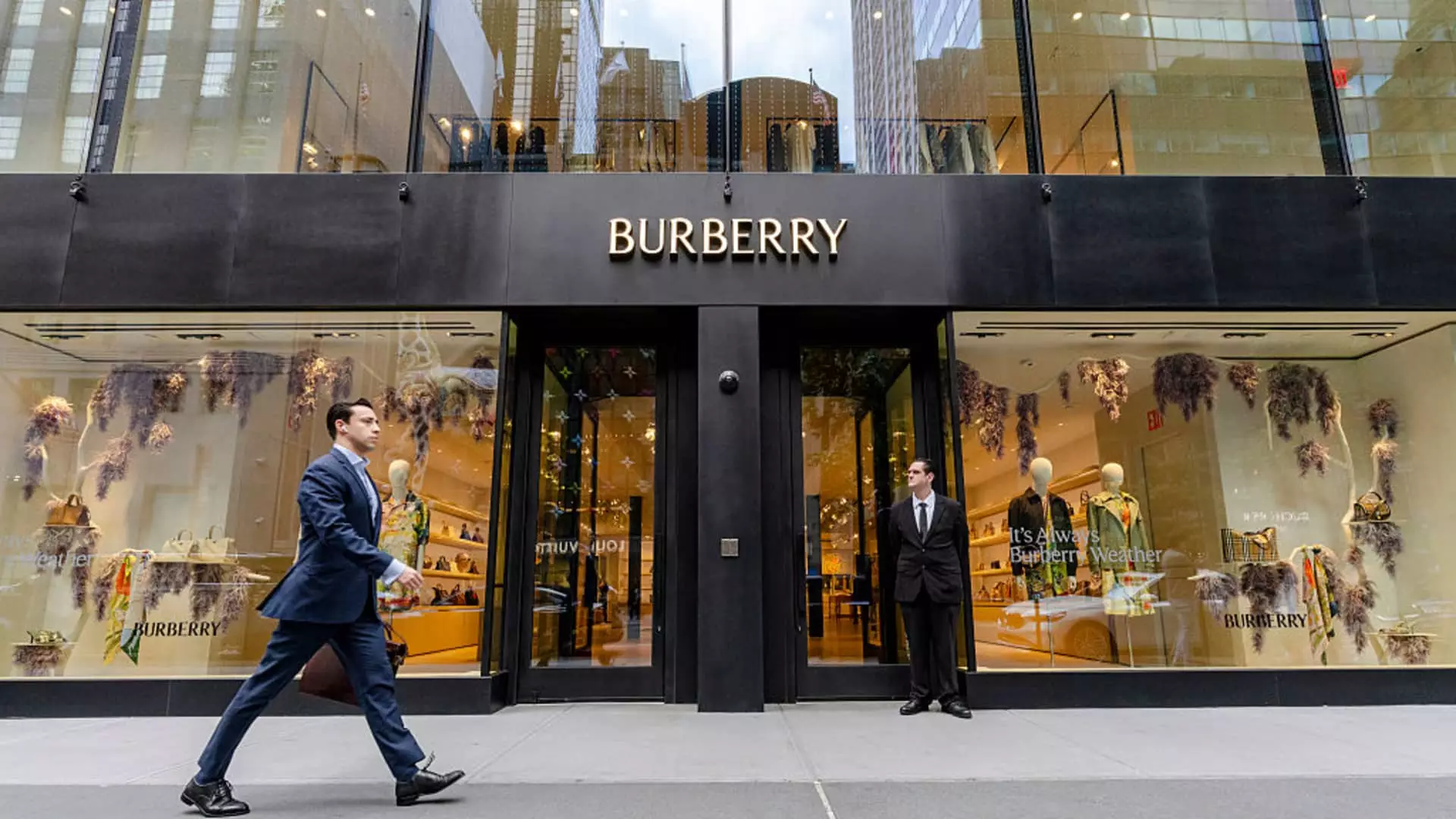The latest report on Burberry’s sales reveals a tentative glimmer of hope: a modest 4% increase in the Americas during the recent quarter. While this uptick might seem promising on the surface, it masks the underlying fragility of the brand’s recovery trajectory. The broader context presents a more sobering picture—marked by overall declines in key regions such as China and Asia Pacific, and a looming threat of U.S. tariffs that could undermine any gains. This inconsistency underscores a critical reality: Burberry, and the luxury sector at large, remains vulnerable to macroeconomic headwinds and geopolitical tensions, which threaten to erode consumer confidence and spending capacity.
The American market, historically vital for luxury brands, appears to be a battleground of contrasting fortunes. The 19% contribution to Burberry’s revenue is significant, yet far from stable. The company’s CEO emphasizes diversity in consumer behavior — from high-spenders to casual mall shoppers — as a sign of resilience. But such diversification can only provide temporary relief if broader economic factors, like inflation and tariffs, turn against the sector. The idea that a single-quarter uptick indicates a sustainable turnaround is overly optimistic, especially when considering the structural challenges present across the global luxury landscape.
Strategic Overhauls and the Illusory Promise of Change
Burberry’s recent internal reforms, including significant layoffs and cost-cutting efforts, reflect a desperate attempt to reposition the brand. An £80 million annualized savings target by 2026 hints at cost-cutting as a primary strategy rather than organic growth. While trimming the workforce might improve short-term profitability, it raises questions about the long-term health of the brand’s creative and strategic direction. When a heritage company, known for its iconic check pattern and British roots, relies heavily on cost reduction, it risks diluting its brand identity—transforming from a storied luxury house into a mere corporate survivor.
Furthermore, the company’s efforts to pivot toward a “broad, universal appeal” might come at the expense of its unique identity. A focus on mass-market tactics could undermine the exclusivity that once defined Burberry. The challenge lies in balancing accessibility with prestige, a task that appears increasingly elusive given the current volatility in global markets. The notion that the brand’s new marketing vision is effectively accelerating momentum is optimistic at best; it may well be a fragile veneer disguising deeper strategic missteps.
Market Realities and the Illusion of Resilience
Despite some regional signs of improvement, the broader economic and geopolitical landscape paints a bleak picture. Tariffs, inflationary pressures, and geopolitical tensions between major economies threaten to destabilize the fragile momentum Burberry is attempting to build. The luxury sector’s reliance on the wealthiest consumers—who are now facing economic uncertainty—means that any downturn could be devastating. The Chinese market, a key growth driver in recent years, continues to underperform due to sluggish tourism and adverse geopolitical sentiment.
Moreover, the sector’s dependence on a luxury consumer base that is increasingly skeptical about overbranding, conspicuous consumption, and environmental concerns complicates Burberry’s efforts. As more consumers demand authenticity, sustainability, and social responsibility, the brand’s strategy to restore its British heritage appeal must evolve beyond superficial marketing. If Burberry fails to genuinely align with these changing values, it risks falling behind its more agile competitors who are already embracing purpose-driven branding.
In the end, Burberry’s current efforts seem more like a desperate scramble for relevance rather than a carefully planned revival. The company’s focus on short-term gains—via cost cuts and superficial marketing tweaks—may thwart a deeper transformation. While the recent uptick in sales and optimistic commentary from executives and analysts provide fleeting encouragement, the reality remains stark: without addressing the fundamental economic, geopolitical, and cultural headwinds, Burberry’s so-called turnaround could be little more than a false dawn.

